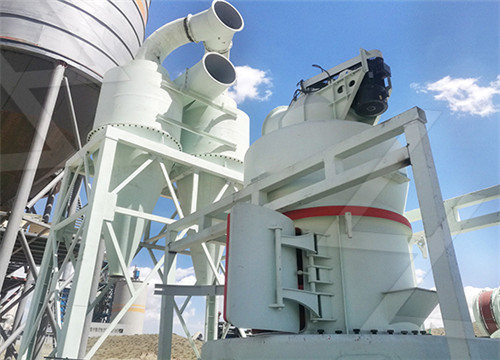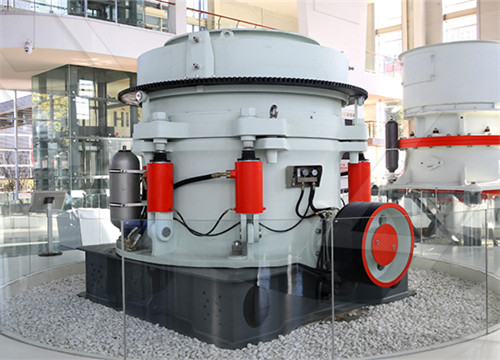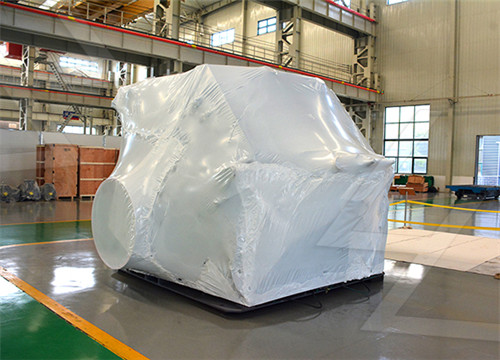crystal triclinic minerals

Triclinic system Definition Facts Britannica
triclinic system, one of the structural categories to which crystalline solids can be assigned. Crystals in this system are referred to three axes of
获取价格
The 7 Crystal Systems (with Examples and Images)
2022年11月24日 Triclinic. Technically, the hexagonal crystal family is a classification for space groups, just like crystal systems are a classification for point groups, and lattice
获取价格
Donald B Peck - Crystallography: The Triclinic System - mindat
There are only two crystal classes in the Triclinic System, the Pinacoidal Class and the Pedial Class. With a few more than 400 minerals that crystallize in the system, more
获取价格
Crystal system - Wikipedia
Crystal systems that have space groups assigned to a common lattice system are combined into a crystal family. The seven crystal systems are triclinic , monoclinic ,
获取价格
Minerals in the Triclinic crystal system - mindat
Minerals in the Triclinic crystal system. Abelsonite Abramovite Adamsite- (Y) Addibischoffite Aenigmatite Afmite Agrellite Aheylite Ajoite Akatoreite Albite
获取价格
10.5: Point Groups and Crystal Systems - Geosciences LibreTexts
About 10% of the common minerals are cubic, 10% are tetragonal, 10% are triclinic, 20% are hexagonal or rhombohedral; the remainder are 25% orthorhombic and 25%
获取价格
Triclinic Minerals - The Mineral and Gemstone Kingdom
Chemical Group: Crystal Group: Color: Streak: Hardness: ...
获取价格
Triclinic System Mineralogy4Kids
Triclinic System. Characteristics of Triclinic Crystals: Three crystallographic axes are of unequal lengths that make oblique angles to each other. 1-fold symmetry axis as their
获取价格
What is a Crystal? - International Gem Society - IGS
Crystal Systems. All minerals form in one of seven crystal systems: isometric, tetragonal, orthorhombic, monoclinic, triclinic, hexagonal, and trigonal. Each is distinguished by the geometric parameters of its unit cell,
获取价格
Triclinic System Mineralogy4Kids
Characteristics of Triclinic Crystals: Three crystallographic axes are of unequal lengths that make oblique angles to each other. 1-fold symmetry axis as their only symmetry. Common Minerals of the Triclinic System. Amblygonite.
获取价格
Definition, 7 Types of Crystal Structure with Videos - BYJU'S
They are Seven Crystal Systems and are stated below with illustrated examples. The Seven Crystal Systems. Triclinic System: It is the most unsymmetrical crystal system. All three axes are inclined towards each other, and they are of the same length. Based on the three inclined angles the various forms of crystals are in the paired faces.
获取价格
Triclinic Unit Cell – Materials Science Engineering
2022年11月24日 The triclinic Bravais lattice is the most general Bravais lattice, with no symmetry requirements. For this reason, it is sometimes called the “asymmetric” lattice or crystal structure. Triclinic has 3 unequal lattice parameters a, b, and c; and 3 different, non-90º lattice angles α, β, and γ. The simple triclinic crystal structure is based on the
获取价格
10.5: Point Groups and Crystal Systems - Geosciences LibreTexts
Minerals belong to all seven crystal systems. About 10% of the common minerals are cubic, 10% are tetragonal, 10% are triclinic, 20% are hexagonal or rhombohedral; the remainder are 25% orthorhombic and 25% monoclinic. Within each system, different point groups have different amounts of symmetry. Most natural crystals fall into the point group ...
获取价格
10.5.2: Characteristics of Crystals Belonging to the Different Crystal ...
2022年8月28日 10.5.2.3 Tetragonal System. All tetragonal crystals have one 4-fold or one 4 axis of symmetry; crystals that have more than one 4-fold or 4 axis must belong to the cubic system. Tetragonal crystals may also have 2-fold axes and mirror planes. As with the crystals in the hexagonal system, tetragonal crystals are often combinations of prisms
获取价格
Triclinic crystal forms Earth Sciences Museum - University of
Affiliations. Department of Earth and Environmental Science. Peter Russell Rock Garden. Wat on Earth educational newsletter. Waterloo Science Outreach. Earth Science Museum. University of Waterloo. 200 University Ave. W. Waterloo, Ontario, Canada, N2L 3G1.
获取价格
Biaxial Minerals - Tulane University
All minerals that crystallize in the orthorhombic, monoclinic, or triclinic crystal systems are biaxial. Biaxial crystals have 2 optic axes, and this distinguishes biaxial crystals from uniaxial crystals. Like uniaxial crystals, biaxial crystals have refractive indices that vary between two extremes, but also have a unique intermediate ...
获取价格
Crystal shapes - The Australian Museum
The shapes of crystals are determined by a number of factors such as the size and length of their surfaces (known as 'faces') and edges, as well as the angles between these. These shapes are named after their geometry - for example, crystals based on cubes belong to the 'cubic or isometric' crystal group. There are seven main crystal groups or ...
获取价格
Triclinic - Minerals Glossary of Terms
Triclinic. Any mineral that falls under the following specifications belongs to the triclinic crystal system: Three axes, all of them are unequal in length, none of them are right angles to each other. 3D Animated Illustration of a Triclinic Crystal with Axes. Crystals kindly provided by Smorf. Microcline Crystallizes in the Triclinic System.
获取价格
Triclinic System - Structure, Classes, and Properties - Vedantu
5 之 Many of the crystals in the triclinic system have distinct to perfect cleavage - that is, a mineral's tendency to break along atomic planes of weakness—for example, kyanite, talc, turquoise, etc. The Refractive Index of minerals in the triclinic crystal system is very different due to the variance in how tightly packed their lattice ...
获取价格
Barrier Crystals – from the Triclinic Crystal System
The minerals that form in the triclinic, Barrier crystal structure are the true protection crystals. The Barrier crystals are similar to Guardian crystals; the difference is the focus. The Guardians are crystals that help you focus on protecting something you value – an inward focus in a way. In contrast, the Barrier crystals are externally ...
获取价格
Minerals and the crystalline state: 6.3 Crystal systems
A triclinic crystal, such as plagioclase feldspar or kyanite, can be likened to a packet of envelopes pushed askew in two directions. No edges or angles are the same, and it has no axis of symmetry. A monoclinic crystal, such as gypsum, mica, orthoclase feldspar, hornblende, augite or talc, can be likened to a partially squashed matchbox cover ...
获取价格
Crystal Form, Zones, Habit - Tulane University
In the monoclinic, triclinic, and orthorhombic crystal systems, the form {111} is a general form because in these systems faces of this form will intersect the a, b, and c axes at different lengths because the unit lengths are different on each axis. ... Hardness - In some minerals there is a difference in hardness in different directions in ...
获取价格
Triclinic System - Structure, Classes, and Properties - Vedantu
5 之 Many of the crystals in the triclinic system have distinct to perfect cleavage - that is, a mineral's tendency to break along atomic planes of weakness—for example, kyanite, talc, turquoise, etc. The Refractive Index of minerals in the triclinic crystal system is very different due to the variance in how tightly packed their lattice ...
获取价格
Barrier Crystals – from the Triclinic Crystal System
The minerals that form in the triclinic, Barrier crystal structure are the true protection crystals. The Barrier crystals are similar to Guardian crystals; the difference is the focus. The Guardians are crystals that help you focus on protecting something you value – an inward focus in a way. In contrast, the Barrier crystals are externally ...
获取价格
Minerals and the crystalline state: 6.3 Crystal systems
A triclinic crystal, such as plagioclase feldspar or kyanite, can be likened to a packet of envelopes pushed askew in two directions. No edges or angles are the same, and it has no axis of symmetry. A monoclinic crystal, such as gypsum, mica, orthoclase feldspar, hornblende, augite or talc, can be likened to a partially squashed matchbox cover ...
获取价格
Crystal Form, Zones, Habit - Tulane University
In the monoclinic, triclinic, and orthorhombic crystal systems, the form {111} is a general form because in these systems faces of this form will intersect the a, b, and c axes at different lengths because the unit lengths are different on each axis. ... Hardness - In some minerals there is a difference in hardness in different directions in ...
获取价格
Table of Gems Ordered by Crystal System - International Gem
The following table contains a selection of minerals gemologists may encounter as jewelry stones or gem specimens. The gems are sorted by their crystal system: cubic (isometric), tetragonal, hexagonal, trigonal, orthorhombic, monoclinic, and triclinic. These butterscotch-colored wulfenite gemstones show their tetragonal crystal structure.
获取价格
CHAPTER 3: CRYSTAL STRUCTURES - University of Notre
the different Crystal Systems. There are six Crystal System 1. The CUBIC (also called Isometric system) 2. The TETRAGONAL system 3. The HEXAGONAL system 4. The ORTHORHOMBIC system 5. The MONOCLINIC system 6. The TRICLINIC system Every Crystal System involves a number of Crystal Classes. y
获取价格
External Symmetry of Crystals, 32 Crystal Classes - Tulane University
Note that the 32 crystal classes are divided into 6 crystal systems. The Triclinic System has only 1-fold or 1-fold rotoinversion axes. The Monoclinic System has only mirror plane(s) or a single 2-fold axis. ... Chalcopyrite and stannite are the only common minerals with crystals in this class. Ditetragonal-dipyramidal Class, 4/m2/m2/m ...
获取价格
Feldspar - Mineralogy, Crystallography, Structure Britannica
Crystal structure. Sanidine and orthoclase are monoclinic or nearly so; the plagioclase feldspars are triclinic.All, however, have the same fundamental structure: it consists of a continuous, negatively charged, three-dimensional framework that is made up of corner-sharing SiO 4 and AlO 4 tetrahedrons (each tetrahedron consists of a central silicon or
获取价格
Bravais Lattice - 14 Possible Crystal Structures with Illustrations
5. Triclinic System. There exists only one type of triclinic Bravais lattice, which is a primitive cell. It obeys the following relationship. a ≠ b ≠ c. 𝛂 ≠ 𝞫 ≠ 𝝲 ≠ 90 o. An illustration of a simple triclinic cell is given below. Such unit cells are found in the structure of potassium dichromate (Chemical formula K 2 Cr 2 O 7 ...
获取价格
Types of Crystals: Shapes and Structures - ThoughtCo
2019年11月7日 Triclinic: These crystals are not usually symmetrical from one side to the other, which can lead to some fairly strange shapes. Monoclinic: Like skewed tetragonal crystals, these crystals often form prisms and double pyramids. This is a very simplified view of crystal structures. In addition, the lattices can be primitive (only one lattice ...
获取价格
Triclinic nematic colloidal crystals from competing elastic and
2016年4月1日 Mundoor et al. deposited luminescent nanorods into a liquid crystal solvent (see the Perspective by Blanc). This caused a competition between local electrostatic interactions and the elastic ordering of the liquid crystal. The nanorods ordered into a triclinic structure not otherwise attainable. The authors further adjusted the structure
获取价格
Minerals in the Triclinic crystal system, Pinacoidal class (-1)
Photo Photo Galleries by Color New Photos Today New Photos Yesterday Members' Photo Galleries Past Photo of the Day Gallery Photography. Minerals in the Triclinic crystal system, Pinacoidal class (-1) Abelsonite Abramovite Addibischoffite Aenigmatite Afmite Agrellite Aheylite Akatoreite Albite Albrechtschraufite Althupite ...
获取价格
11.8.1: Unit Cell Parameters and Crystallographic Axes
In triclinic minerals, none of the angles are special and a, b, and c are all different lengths. Although the literature contains exceptions, ... The table below gives examples of unit cell parameters for minerals from each of the crystal systems; unnecessary information has been omitted. These same example minerals are the ones listed in ...
获取价格
Triclinic Mineralogy4Kids
A member of the plagioclase feldspar group and the Ca-rich end member of the albite-anorthite series, this mineral is one of the rock-forming minerals. It forms in mafic plutonic rocks. Its name comes from the Greek word meaning “not right angle” or “oblique,” in allusion to the oblique triclinic form of the crystals.
获取价格